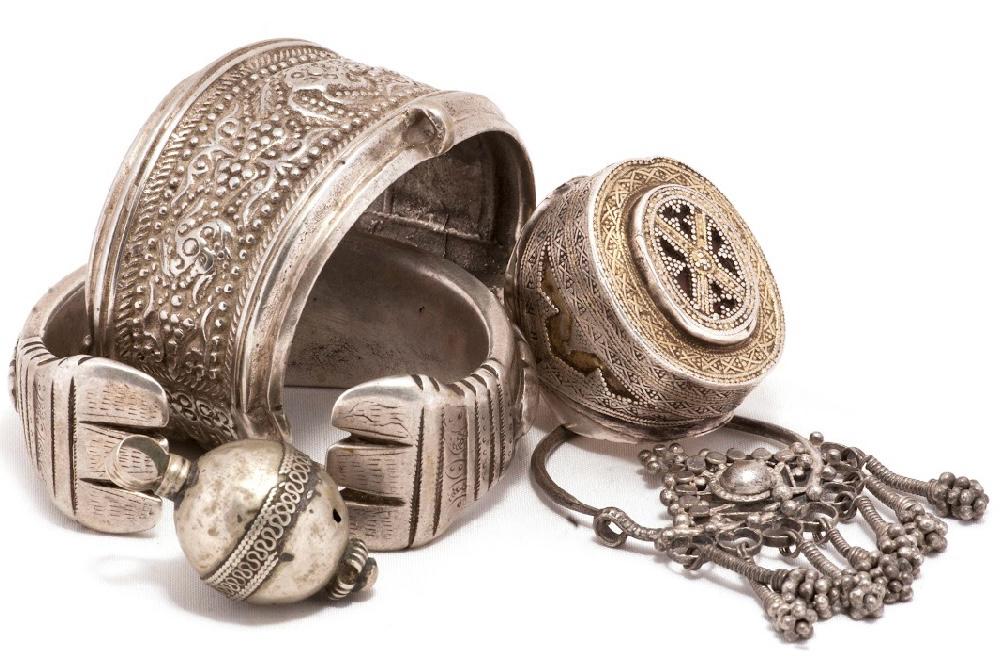
The magic of Kazakh national jewelry

Modern jewelry art of domestic masters has centuries-old traditions, many of which have survived to this day. So, the central image of our MUSEOFNOMAD jewelry collection, developed jointly with Kazakhyuvelir, was shanyrak - a structural element of the roof of the yurt, a symbol of Tengrism.
The modern jewelry art of domestic craftsmen has centuries-old traditions, emphasizing the aesthetic and cultural traditions of the people, and magnificent collections of monuments of Eastern toreutics can be viewed in the national and ethnographic museums of the country. The territory of today's Kazakhstan has always been rich in minerals, which our nomadic ancestors mined in a handicraft way, and the products were originally decorative and applied in nature. Kazakh zergers gave life to a wide range of products, among which were household utensils, toiletries, cutlery; details for decorating the wooden frame of the yurt, musical instruments, weapons, horse harness, men's belts; and, of course, women's jewelry.
Many Europeans came to the steppe inhabitants to learn their skills - this is how foreign borrowings took place: the work of nomadic and sedentary peoples mutually enriched jewelry in form, technique, materials used, decor details and purpose - in a word, it contributed to the development of elegant and painstaking art.
So, after reading an excerpt from my book, you realized that my great-grandfather was a real zerger (though, it's a pity that his sons chose a different path, but still, helping their father, they knew a lot about jewelry). That is why I believe that, being the great-granddaughter of the master's jewelry, I have the right to write about Kazakh national jewelry. You can talk a lot about the decorative and applied direction of domestic zergers, in which my great-grandfather also worked, but I want to tell you more about women's jewelry.

In the old days, thanks to the functional purpose of the jewelry worn by a woman, it was possible to find out her origin, preferences, property differences, class and marital status, even age, as well as the region of residence and the historical stage in the development of national culture. Jewelry accompanied Kazakh women almost throughout their lives, and most of all they liked silverware, which in the Steppe was considered a sacred metal, guaranteed the well-being of the family and allegedly even deprived of the power of poisons (that is why women cooked food with silver rings on their hands, and when the babies were bathed, a product made of silver was dipped into the water).
By the way, this noble metal was mentioned in the Qur'an: when the Almighty spoke about a great variety of benefits and beauties that bring joy and pleasure to a person, He also mentioned vessels, cups and necklaces made of silver. “... And they will go around them with vessels of silver and goblets of crystal. And with cups of shining silver that bear marks of measure. And they will be allowed to drink from a bowl with the addition of ginger. " “… Wherever you look, everywhere you will see grace and great wealth. They are wearing green robes of fine silk and embroidered brocade. They are adorned with silver necklaces. And the Lord will give them the purest drink to drink. Truly, this is a reward for you, your diligence is accepted worthy of gratitude! " (Surah "Al Insan", 76: 20-22)
The craftsmen also had various jewelry made of gold, but they were in less demand due to the high price. Despite the fact that silver jewelry was also worth a lot, nevertheless many steppe inhabitants had such wealth. Possessing a precious thing, Kazakh women believed in the power of nature, which would help them to strengthen their health, protect them from evil spirits and make their dream of happiness come true, and then the decoration became a family heirloom and was inherited. That is, initially, national jewelry had magical, religious, protective and practical functions, and only after many, many decades, the aesthetics and beauty of jewelry became more significant for women.
Restraint of color, laconic forms with some massiveness, geometric shapes and steppe ornamentalism - these are the main differences between the works of Kazakh jewelers, the owners of which felt themselves under the protection of sacred metal and oligonous stones, endowed with no less magical power.
Even the clothes, hats and shoes of Kazakh women were decorated with embroidery, patches and appliqués. The steppe women wore a variety of flat and voluminous fasteners as decorations for national clothes: ilgek, kaptyrma and kapsyrma, connecting the sides of the camisole with each other, which had beautiful expressive forms and decor. In addition to them, the zergers produced ornamental patterned plaques for decorating clothes - tana, buttons - darkness and triangular amulets - tұmar, and hair combs - taraқ did not stand aside. And also master-jewelers worked on the obligatory elements of national clothing for tightening the waist - men's and women's belts, mainly on a velvet base, decorated with ornamental embroidery and silver plaques, which were called beldik.
Author: Madina Kurbanalieva
Photo: Kazakhjuvelir